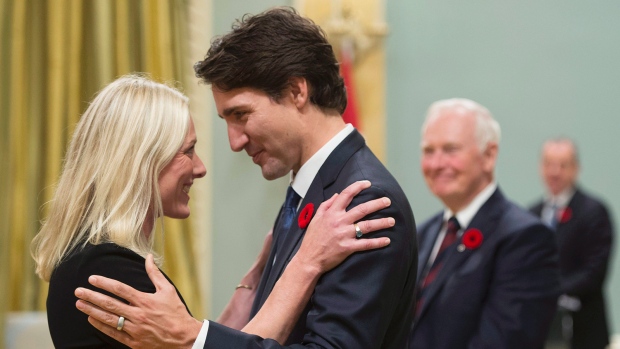Six years ago the Liberals (and NDP) voted for the Climate Change Accountability Act (Bill C-311), supporting emission reduction targets of 25 per cent below 1990 levels by 2020 and 80 per cent below 1990 levels by 2050. (This bill was passed by the House of Commons, but killed without debate by the Conservative majority in the Senate.)
Last year the Conservative government submitted an economy-wide emissions reduction target of just 30 per cent below 2005 levels by 2030 to the UNFCCC as Canada’s Intended Nationally Determined Contribution (INDC). Because Canada’s INDC includes land use, land use change, and forestry accounting using a net-net approach, Climate Tracker estimates that Canada’s commitment amounts to only a 13 per cent reduction in industrial greenhouse gas emissions, an increase of eight per cent above 1990 levels.
Canada’s INDC also specifies that Canada may use international mechanisms to achieve its 2030 target. That is, Ottawa would fund theoretically equivalent emissions reduction elsewhere in the world, rather than reduce emissions in Canada.
Prior to the COP21 Paris climate talks last year, Catherine McKenna repeatedly referred to the Conservative’s emission reduction target as a “floor, not a ceiling” of what Canada should be doing. Trudeau concurred, saying that he hoped to set a more ambition target and promising, “We’ll demonstrate that we are serious about climate change.”
At COP21, McKenna contributed significant leadership in helping to get the resulting treaty to embrace the long-term goal of keeping warming below 1.5 C. And Trudeau indicated that “Canada is back” and pledged to reduce emissions in Canada.
Yet, in a CTV interview on September 18, McKenna admitted that the Liberals are not going to strengthen Harper’s target.
This is a poor showing compared to, for example, the EU and its Member States, who are committed to a binding target of an at least 40 per cent domestic reduction in greenhouse gas emissions by 2030 compared to 1990 (not 2005). Or to the U.S., whose target year is 2025, five years earlier than Canada’s.
The UNFCCC’s synthesis report on the cumulative effect of all INDCs received before COP21 shows aggregate global emission reductions resulting from their implementation will only limit warming to 2.7 C by 2100. The April 2016 “Pathways from Paris” report by the Energy Transition Commission lists several sources that predict a temperature rise of between 2.2 C and 3.4 C under full implementation of current INDCs. To keep warming well below 2 C, they estimate emissions need to be 30 per cent below those resulting from current INDCs.
Environment and Climate Change Canada states that Canada emits about 1.6 percent of the world’s GHG emissions. However, according to the World Resources Institute, Canada is among the top 10 absolute emitters. Of these countries, Canada has the highest emissions per capita, followed by the United States and Russia, all emitting more than double the global average per person. China’s per capita emissions are less than a third of Canada’s and India’s are less than one-tenth. Canada’s emissions intensity is also above the world average. Ethically and morally, Canada should be committing to a much higher emissions reduction target.
Climate Action Network Canada has indicated that an emissions reduction target of at least 35 per cent below 2005 levels by 2025 and 50 per cent below 2005 levels by 2030 would be consistent with Canada’s capacity — and its fair share.
By not setting more a more ambitious target, it appears that the Liberals are not only abandoning their Paris commitment of avoiding 1.5 C, or even 2 C, of warming, but are also not taking adequate responsibility for Canada’s share of global GHG contributions. They certainly fall short of demonstrating the leadership necessary to promote stronger reduction targets on a global basis.
Michelle Mech is a freelance writer living on Salt Spring Island, B.C.
Like this article? rabble is reader-supported journalism. Chip in to keep stories like these coming.
Image: Flickr/Environment and Climate Canada




